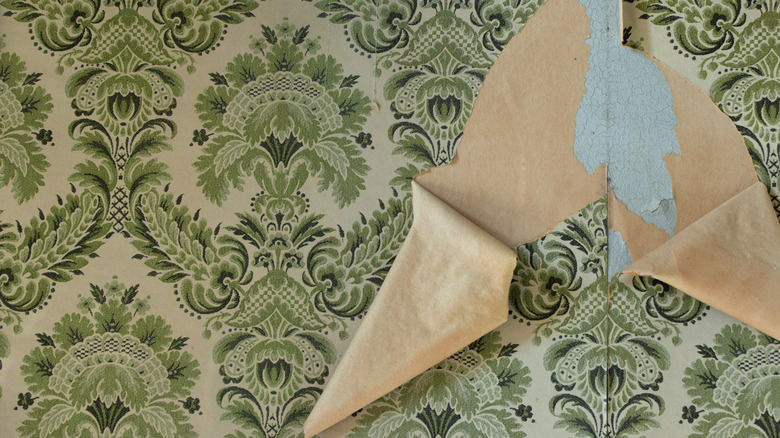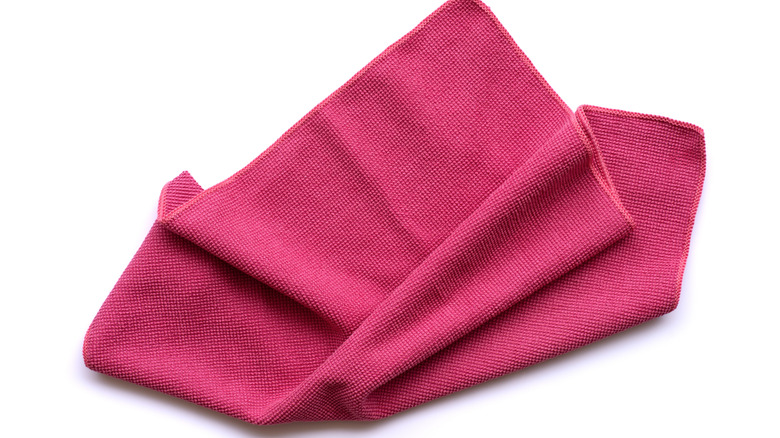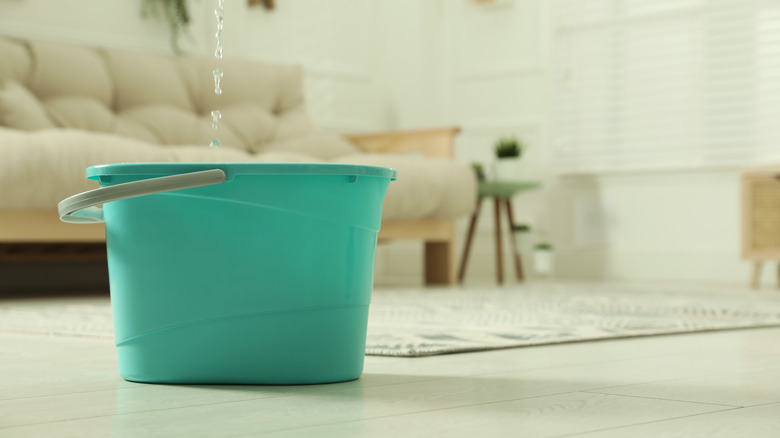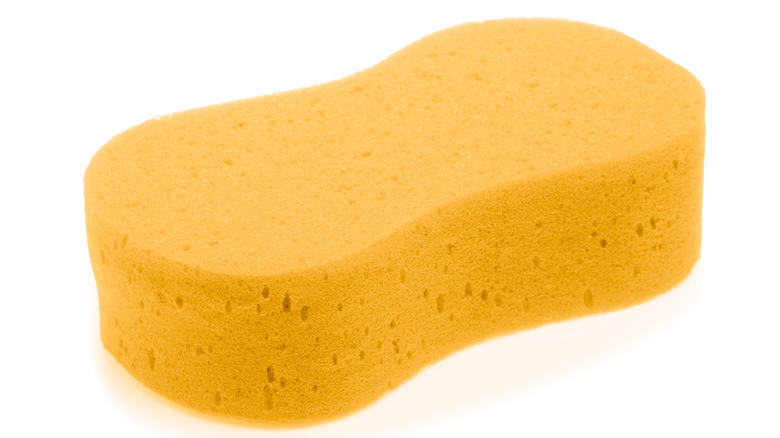The 3 Step Process That Will Clean Up Your Disastrous Wallpaper
Not many of us think about cleaning the interior walls of our homes, besides from occasional dusting. However, if you have wallpaper, it does get dirty, and you do need to clean it properly. Of course, how dirty your wallpaper gets depends on the location. Wallpaper in the kitchen can especially become grimy from smoke and oil, and wallpaper in bathrooms can grow moldy if not taken care of properly, according to Bob Vila.
The Spruce says that wallpaper should be dusted every two months. You must identify the type of wallpaper you have because the material determines how you will go about cleaning it. Wallpaper ranges from vinyl, fiberglass, non-woven, traditional (foil and flocked paper), and natural grasses and bamboo. It doesn't matter what type of wallpaper you have because every type collects dust, air-borne grease particles, and grime. Don't let your wallpaper become dingy, as it can interfere with the overall design of your home. Just follow these three steps to refresh its original look.
1. Start dusting
No matter what type of wallpaper you have, it all needs to be dusted, according to Bob Vila. Dusting first is a priority because washing your wallpaper with water will be quite difficult if you're trying to scrub through a layer of dust that just becomes more prominent as you add more water. When dusting, use a microfiber cloth to prevent any scratching, and attach it to something long to dust off hard-to-reach areas.
You can also use a vacuum to dust your wallpaper. But be cautious and check for any bristles that could not only tear your wallpaper but also damage your walls. When dusting your wallpaper, start at the top and gently pull down in long, vertical lines. HGTV says that vacuums are especially handy for those who have textured wallpaper, and they may have to move it horizontally to collect all the dust. Also, don't forget the corners where dust tends to accumulate the most.
2. Get a bucket of soapy water
Bob Vila says the next step to properly cleaning your wallpaper is to use soap and water. This step is specifically for those who have wallpaper made of either vinyl or fiberglass and is especially beneficial for wallpaper in the kitchen as it can easily wipe off any sort of grease stains. Once you grab a large bucket, fill it with 1 gallon of water and mix in ¼ cup of mild dish soap.
Grab a soft sponge and dip it into the soapy water, The Spruce explains. You must squeeze out most of the water, leaving your sponge only slightly moist to prevent soaking your wallpaper. Once you've done this, you're then ready to gently start rubbing your wallpaper in long strokes from the top to the bottom. If there are any stubborn stains that aren't coming off right away, hold back from rubbing too roughly. Stain removal is in the following step.
3. Removing pesky stains
The final step is stain removal, according to Bob Vila. Each stain requires a different cleaning method, so first, determine what you're working with. Pencil marks or handprints can easily be removed with a gum eraser by gently stroking the mark until it disappears. For those dealing with water stains, grease stains, or other discoloration, it's advised to contact the wallpaper manufacturer for the proper cleaning solution. Vinyl wallpaper can easily be cleaned with bleach, but if you have older wallpaper or cannot contact the manufacturer, patch test before using bleach to remove the stains. Dip a q-tip into some bleach and rub it on a small area of your wallpaper. If no further discoloration occurs, then you are free to use it on the rest of your wallpaper.
If your wallpaper is in the bathroom and has visible water damage, you can use a mixture of water, bleach, and white vinegar. As advised before, conduct a patch test to ensure it will not cause further discoloration. After mixing a ¼ cup of bleach and 1 cup of water, grab a soft sponge, dab the area, and let the cleaning solution sit for five minutes. Once time's up, dry up the solution with a towel. Stains on fiberglass wallpaper must be removed with a mixture of ½ cup of white vinegar and 1 cup of water. Directions to clean the area are the same. For stains that just won't go away, contact your manufacturer for a solution.



